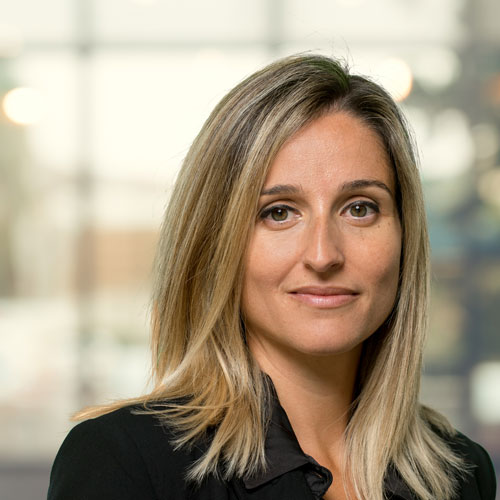Wind energy system integration
The implementation and transport of large scale deployment of wind energy to the Dutch energy system requires heavy-duty infrastructure; infrastructure which enables energy companies to deliver electricity where it is most profitable while preventing congestion of the grid. Surpluses in one country can be easily transported to another. TNO is researching the technologies and markets that will enable the efficient transport, conversion, and storage of energy generated from onshore and offshore wind power.
Creating tomorrow's power system now
To have a network for sustainable (wind) energy in the future, we all need to make a big deal today. Because climate change starts with system change. That is why TNO is working today with partners on tangible system solutions to bring offshore energy efficiently to land. Smartly matching supply and demand. But also, on biodiversity around wind farms. We can only achieve the climate goals if we work on tomorrow's system today.
Webinar: System transformation in offshore renewable supply
From 4.7 GW to 120 GW by 2030: an ambitious goal for offshore wind capacity. How will system transformation make this possible? TNO is driving innovations to optimize infrastructure, maximize energy supply, and improve hybrid plant viability. To discuss these developments and their implications, TNO is hosting a webinar on Wednesday, October 16, 2024, at 13:00 CET.
Maximising the value of wind energy
The immense growth of offshore wind energy generation, combined with its conversion and storage, is leading to new businesses. Supply and demand are becoming less predictable, and markets are changing. We are investigating which factors play a role in this and how they influence the considerations and decisions of wind-farm developers, as, to maximise the value of large volumes of wind energy in the future energy system, we need to ensure sustainable business cases for developers up to 2030, 2050, and beyond.
It is still unclear how much wind energy needs to be incorporated into the energy system, transferred to industry as electricity, converted into hydrogen and or other energy carriers like chemicals and heat, or stored in diverse ways. Using our tools and models, developers are able to build solid business cases.
Required infrastructure
Increasing the capacity of offshore wind energy to 21 gigawatts by 2030 will require a substantial short-term infrastructure expansion, both for electricity and hydrogen. Working in collaboration with the business community, we are investigating which infrastructure is needed. We are looking at possible combinations of grid connections, connection with other offshore renewable technologies such as floating solar as well as the extent to which the conversion of wind energy into hydrogen through electrolysis is necessary.
Hydrogen as an energy carrier provides cost benefits when transporting large capacities over long distances. It can also be stored as a buffer to build in more flexibility into the energy supply. In the area of electricity transport, we are investigating the reliability of the cables and the electrical connection with electrolysers and batteries.
TNO outlines two scenarios for offshore wind in 2030 in The Netherlands
Whitepaper: 'Offshore wind business feasibility in a flexible and electrified Dutch energy market by 2030’.
Download the full report (pdf) including appendices.
Integrating generation, storage, and conversion
A new development concerns the combination of renewable energy generation with its conversion and storage. In future, wind farms, solar farms, electrolysis units, and battery systems are expected to work together in one sustainable, hybrid power plant. We are investigating how all the components involved in the generation, storage, and conversion of energy can be integrated, monitored, and controlled. Our findings are of tremendous importance to the development of future on- and offshore wind farms.
In addition, our Energy Management System (EMS) is able to accurately match energy supply to market demand, thus optimising the utilisation of the electricity grid. Using simulation, optimisation and control models, EMS is a unique tool for designers, developers, operators, and network managers.
Energy hubs at sea
Countries bordering the North Sea (especially the Netherlands, Germany, Belgium, and Denmark) are working ever more closely together on the development of wind energy at sea. The current focus is on energy hubs, artificial islands, multi-country connections and new grid concepts that can transport electricity generated by wind farms and converted into, for example, hydrogen, and to the connected countries. We are investigating how future energy hubs can be set up profitably for all parties involved.
We are also developing concepts for the grid connection of offshore projects and researching the conversion into and transport of hydrogen. On top of this, we are investigating whether (and how) the existing electrical infrastructure can be expanded. In doing so, we are not only developing technological innovations, but also dealing with market mechanisms and the commercial aspects involved.
Get inspired
Webinar: System transformation in offshore renewable supply


SWITCH tackles the energy issues of the future


SWITCH field lab of TNO and Wageningen University & Research/ACRRES opened


TNO helps study effectiveness of Black Blades with sensors, cameras and radar


Consortium with TNO searches for Stone Age remains at the bottom of the North Sea




